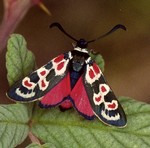| |
| | 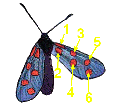 | |  | | |
| | numbering of the spots | | | | |
| | | | | | | |
| | | | | | | |
| | choice A |  | - red spots are large
- possible red belt
- possible red or white collar
- spot No.6 is half-moon shaped and comes into contact with spot No.5
| 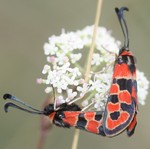 | next step >> | |
| | | | | | | |
| | | | | | | |
| | | | | | | |
| | choice B |  | - white collar sometimes hardly defined
- red spots are circled with a whitish border
- usually no red belt, except in populations from the south of France
- spot No.6 is narrow and does not come into contact with spot No.5
| 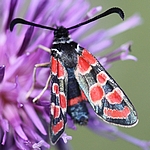 | 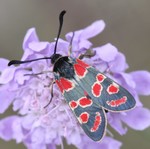 | Zygaena
carniolica |
| | | | | | | |
| | | | | | | |
| | | | | | | |
| | choice C |  | - bold white collar
- bold red belt
- all the red spots are small and surrounded by a thick white border
- spot No.6 has no red scales and looks like a comb
- very local species in the south of France
| | Zygaena
occitanica | |
| | | | | | | |
| | | | | | | |
| | | | | | | |
| | | | | | | |
| | | | | | | |
| | | | | | | |
| | | | | | | |
| | | | | | | |
| | | | | | | |
| | | | | | | |










